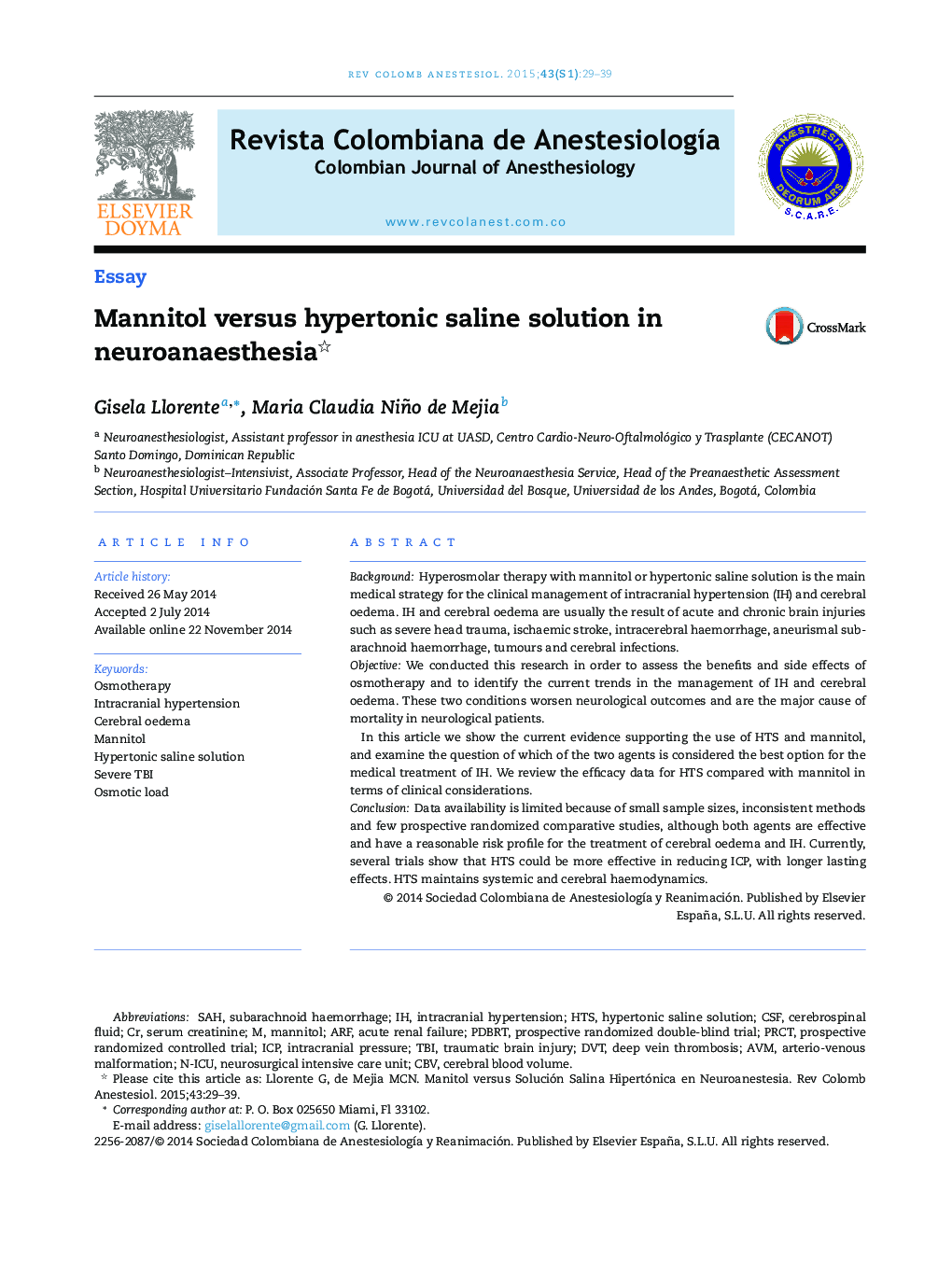| کد مقاله | کد نشریه | سال انتشار | مقاله انگلیسی | نسخه تمام متن |
|---|---|---|---|---|
| 2755762 | 1567387 | 2015 | 11 صفحه PDF | دانلود رایگان |

BackgroundHyperosmolar therapy with mannitol or hypertonic saline solution is the main medical strategy for the clinical management of intracranial hypertension (IH) and cerebral oedema. IH and cerebral oedema are usually the result of acute and chronic brain injuries such as severe head trauma, ischaemic stroke, intracerebral haemorrhage, aneurismal subarachnoid haemorrhage, tumours and cerebral infections.ObjectiveWe conducted this research in order to assess the benefits and side effects of osmotherapy and to identify the current trends in the management of IH and cerebral oedema. These two conditions worsen neurological outcomes and are the major cause of mortality in neurological patients.In this article we show the current evidence supporting the use of HTS and mannitol, and examine the question of which of the two agents is considered the best option for the medical treatment of IH. We review the efficacy data for HTS compared with mannitol in terms of clinical considerations.ConclusionData availability is limited because of small sample sizes, inconsistent methods and few prospective randomized comparative studies, although both agents are effective and have a reasonable risk profile for the treatment of cerebral oedema and IH. Currently, several trials show that HTS could be more effective in reducing ICP, with longer lasting effects. HTS maintains systemic and cerebral haemodynamics.
ResumenAntecedentesLa terapia hiperosmolar con manitol o solución salina hipertónica (SSH) es la principal estrategia médica para el manejo clínico de la hipertensión intracraneal (HIC) y del edema cerebral. La HIC y el edema cerebral suelen ser las consecuencias de lesiones cerebrales agudas y crónicas tales como el trauma craneoencefálico severo, el accidente cerebrovascular isquémico, la hemorragia intracerebral, la hemorragia subaracnoidea aneurismática, y los tumores e infecciones cerebrales. Ambas entidades, contribuyen a peores resultados neurológicos y producen mayor mortalidad en los pacientes neurocríticos.ObjetivoRealizamos esta investigación con el objetivo de valorar lo efectos beneficiosos y secundarios de la osmoterapia y cuáles son las tendencias actuales para el manejo de la HIC y del edema cerebral. En el presente artículo mostramos la evidencia actual que soporta a la SSH y al manitol y cuál se considera la mejor opción como terapia médica en el tratamiento de la HIC. Revisamos la eficacia de los datos para SSH frente a manitol hablando sobre sus consideraciones clínicas.ConclusiónLa disponibilidad de los datos es imitada por las muestras pequeñas, métodos inconsistentes y pocos estudios aleatorizados prospectivos comparativos, y aunque ambos agentes son eficaces y tienen un perfil de riesgo razonable para el tratamiento del edema cerebral y en la HIC, en la actualidad varios ensayos demuestran que la SSH podría ser más eficaz en la reducción de la PIC y por más tiempo. La SSH mantiene la hemodinamia sistémica y cerebral.
Journal: Colombian Journal of Anesthesiology - Volume 43, Supplement 1, January–March 2015, Pages 29–39